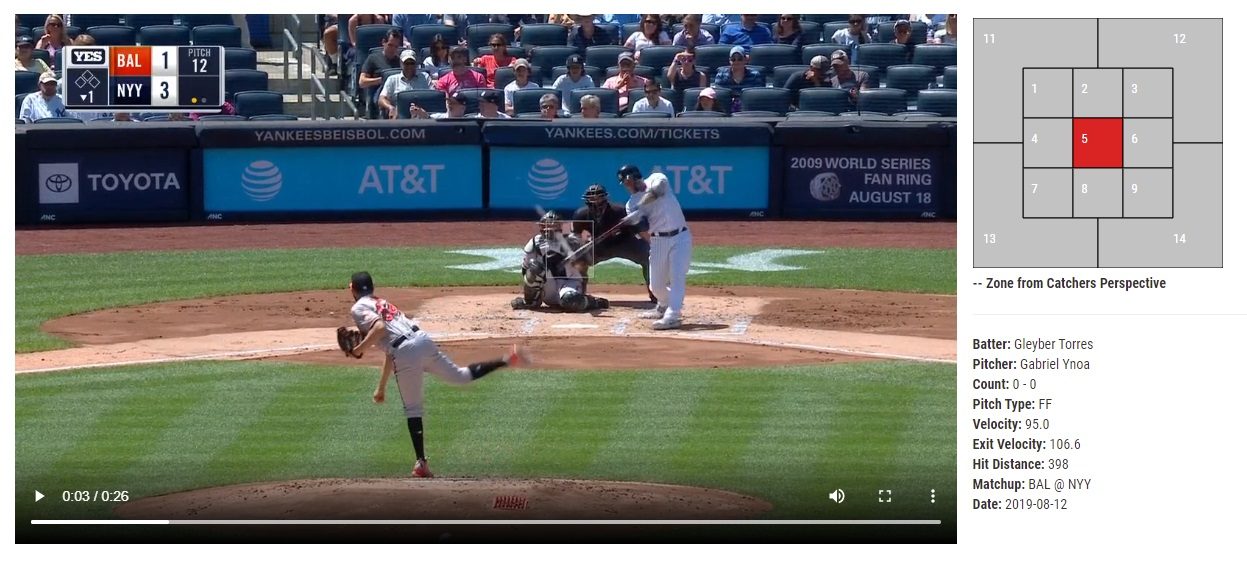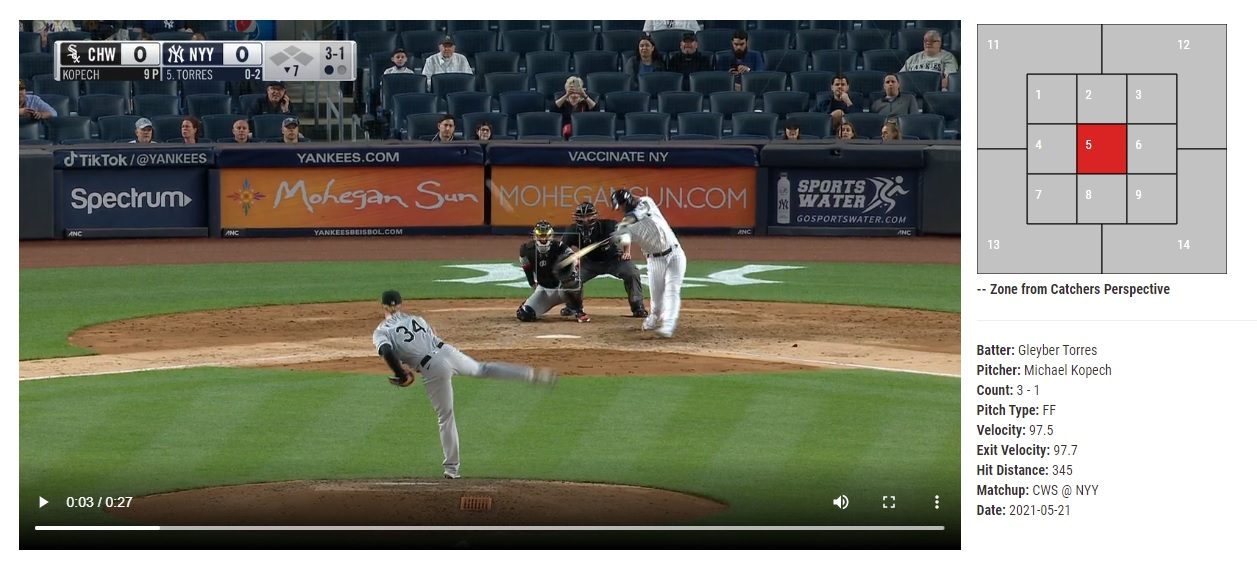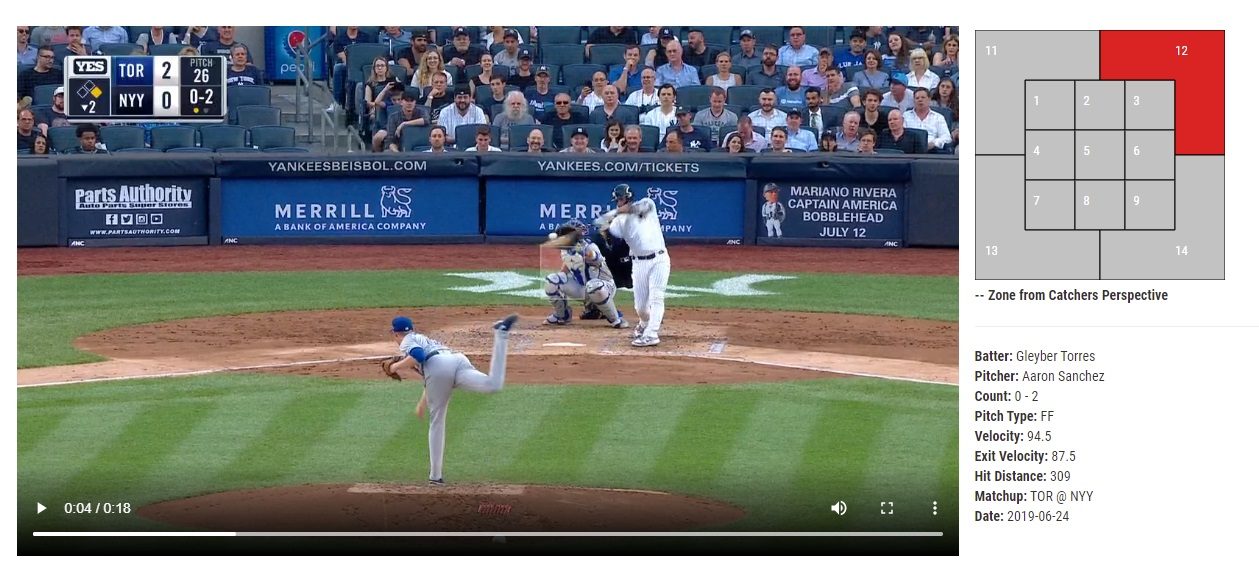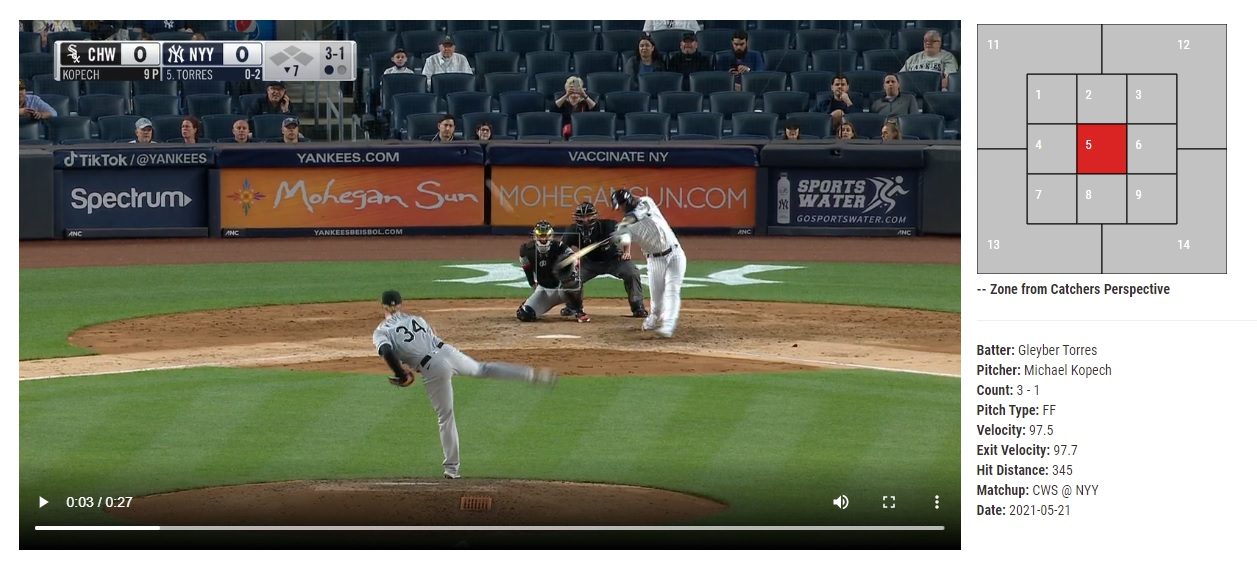Everyone knows that the 2021 New York Yankees are struggling to hit. I have seen many explanations and excuses from the community but I think we can narrow it down to the Yankees management. Something has changed over the past few years and I think management, analytics, data overload, and over coaching has led to the issues in the organization. I believe this is true with pitching as well but I only cover hitting here. I think its easier to just look at one payer and see what has happened over time.
Gleyber Torres was star in 2019 with a 3.6 war (Fangraphs) and a 124 wRC+. In 2021 he is posting a 1.2 war and 87 wRC+ (through August 2021). Offensive war in 2019 was 18.4 and -5.7 in 2021. His defense is saving his overall war numbers this year. We have to assume he is healthy or even healthier in 2021 vs 2019 based on his defensive metrics. So what has happened?
I dug into all the numbers and started my analysis. It was clear that something major changed with Gleyber Torres, but what? The numbers for his batted ball profile show a major change in his ground ball rate. Yes he had more pop ups in 2019 but lets ignore that for this conversation.
| Season | GB % | FB % | LD % | PU % |
| 2018 | 34.3 | 32.1 | 25.4 | 8.3 |
| 2019 | 37.5 | 30 | 24.3 | 8.3 |
| 2020 | 41.7 | 29.6 | 25 | 3.7 |
| 2021 | 42.6 | 27.4 | 25.5 | 4.6 |
Another glaring stat is his pull rate. In 2019 he pulled 41% vs only 34.2% in 2021. From a high level observation this means that his approach changed. He hasn’t been pitched different enough for the numbers to be this drastic. His approach changed or his swing changed. I think its both.
| Season | Pull % | Straight % | Oppo % |
| 2018 | 38.7 | 36.8 | 24.4 |
| 2019 | 41 | 34.9 | 24.1 |
| 2020 | 38.9 | 34.3 | 26.9 |
| 2021 | 34.2 | 38.4 | 27.4 |
Then we look at quality of contact. He has doubled his weak hit %. In 2019 he was under the ball 31.1% vs 25.5 in 2021. I see this as a negative and the only reason he was ever under balls was because he was late (happens to everyone) or he was swinging down more and cutting the ball (this is a good thing in Gleybers swing). Then we look at barrels and his best year was 2019.
| Season | Weak % | Topped % | Under % | Flare/Burner % | Solid % | Barrel % |
| 2018 | 0.6 | 26.7 | 31.1 | 25.7 | 5.7 | 9.2 |
| 2019 | 2.4 | 27.1 | 31.1 | 22.4 | 5.4 | 10.1 |
| 2020 | 2.8 | 27.8 | 32.4 | 25.9 | 6.5 | 3.7 |
| 2021 | 5.3 | 29.7 | 25.5 | 27 | 5.3 | 6.8 |
Now we can look at his approach. In 2019 he was swinging more often, more aggressively, earlier in the count, and when he made a swing, it was an A swing. In 2021 he seems to be taking more pitches and letting too many pitches in the zone go by, especially on the first pitch.
His chase rate is a lot lower but his chase rate contact % is the same. Believe it or not, when Gleyber chases swings outside of the zone and made contact in 2019 he had a .253 batting average. This isn’t horrible and it is a key to his success as a hitter.
What Changed?
Approach
I think the New York Yankees are an organization that is run from high level management. They established an analytics department and a video department that relays information to their coaching staff and expects them to roll out changes. But baseball isn’t played by management. You can’t be black and white with the data and force analytics on a human sport. I think the Yankees have a hitting analyst department that overloads their hitters with too much information and it really has an effect on the younger players. Younger players are not established enough to dismiss the staff and ignore the advice coming in from management. They probably have a system that grades your performance every game or every at bat, probably every pitch and swing. It seems like they expect players to take more pitches and that forces players who like to attack early and be aggressive to feel behind in at bats. They also feel pressure to perform to the analytical review after every game and grade well vs hitting the ball.
Swing Mechanics
When reviewing Gleyber Torres’ swing I noticed that he is more upright in 2021 with a less aggressive load. His leg kick is the same but he doesn’t load his back hip like he did in 2019. He doesn’t produce a counter rotation and show his back pocket to the pitcher like he used to. This leads to him landing open and not able to judge pitches as well and have to commit earlier than he is used to.
Why did he change this? I don’t know the answer but it looks like he is trying to land more even with his weight and then lower the bat in the slot and rotate. In 2019 and all the old swings I have seen from him he would land aggressively, closed, and work with a downward bat path and hands down to the ball. There was less rotating in the swing and his front side was a lot more firm. He would pull pitches because he was down, on time, and catch the ball out front. All the power was still stored in his hips because he hasn’t opened up and his direction was through the ball vs rotating and coming around the ball. This is a trend I see in a few of the Yankees hitters. This is why I think its an organizational approach to having n earlier land, no forward movement, flat bat path, and a rotational swing. Wanting hitters to try and cover all pitches, all the time, to all fields vs seeking one pitch, being aggressive, staying loaded, and attacking the ball with their hands through the ball.
This is evident in ground ball% by location. In 2019 he had a lot of gound balls on pitches up in the zone, even out of the zone up. But in 2021 he doesn’t have many and very few above the zone. If you have a flatter bat path you can’t get on top of balls up in the zone. To further back this up we look at line drive % and see that he hit more line drives but especially up in the zone. Its almost like he cant get on top of the ball at all anymore.
2019

2021

Swings
Fastball Up and Away
2021 FF up and away. You can see how he gets under the ball. Even though this ball is up and away, he still lands open, upright, and gets under the ball.
https://baseballsavant.mlb.com/sporty-videos?playId=e7868f35-732f-4d1c-afb3-647cc3072429
2019 he gets on top of the ball and hits a 2-strike pitch out for a home run. Look at the posture, landing, and staying on top of the ball with a more vertical bat.
https://baseballsavant.mlb.com/sporty-videos?playId=730a8b84-2ad0-4cf5-901b-c3f2d8e1eb3d
Fastball Down and In 0-0 Count
In 2021 you can see how he lands open and pulls off the ball. Attacking it from behind and around. No drive through the ball, everything is rotational.
https://baseballsavant.mlb.com/sporty-videos?playId=812efbbe-f941-40e4-b085-2dd0547fd8c2
In 2019 he held his load/posture and his hips stayed level and balanced. He attacked the ball out in front and all his energy went though the field vs around. Eventhough he is under this ball, its not because he was getting “on plane” behind the ball, its because he was aggressively down to the ball and was just a click off with his timing. Resulted in a sac fly but still hit 344 ft.
https://baseballsavant.mlb.com/sporty-videos?playId=35ace951-66be-4949-94e9-ed7cd607e37c
Fastball Middle Middle
You can see in 2021 how he is pulling away from the ball. He lands with the intention of dropping the bat into the slot or on plane and rotating. This messes with his timing and he becomes all arms. You can clearly see him reaching on a fastball right down the middle on a 3-1 count. Yes this is a home run bu its only 345 ft and 97.7 exit velo.
https://baseballsavant.mlb.com/sporty-videos?playId=3da021b7-efe8-4f16-a17f-3a577e25a70b
Here in 2019 he has the same pitch of a fastball down the middle in a 0-0 count. He stays on this ball with perfect posture and balance. The hands are working out in front of his body. He stays connected with his arms and body. He is not pulling away and is driving the ball up the middle. This ball went 398ft and had an exit velo of 706.6. His hips are working through the ball vs around it. And his bat path stays above the ball the whole time. Swing is down to the ball (we can debate what down means another time).
https://baseballsavant.mlb.com/sporty-videos?playId=52e1b739-e74b-4c60-ab37-032eb904e4a4
Here are the contact still images:
2019

2021

Fastball Up Middle Out of Zone
These are the most telling. I am repeating myself but just look at 2019 vs 2021 and these swings will tell you everything you need to know. Posture, core direction, rotation, bat path, bat slot, and balance. The 2021 swing doesn’t look much like the 2019 swing at all.
2021
https://baseballsavant.mlb.com/sporty-videos?playId=ed01f0cc-f328-4925-9d30-eb01fb7ec2f5
2019
https://baseballsavant.mlb.com/sporty-videos?playId=2651de28-9b0b-4945-b770-dff13e2d8f20
Still images:
2019

2021

How Would I Fix Gleyber Torres’ Swing?
Id start with management and the analytics department and define the goals and how to relay information to the coaching staff and players. I think some players can benefit from data and others are harmed. Once we sort that out, it comes down to working with each hitter and focusing on their strengths while cleaning up some weaknesses.
For Gleyber Id get him back to being a free swinger, especially on first pitches. We would work on a downward path to the ball and make sure the barrel always stays above the ball. I want to work his hands down to the ball and catch it out front while keeping posture and balance. That’s where launch angle happens. You cant artificially create launch from snapping behind the ball with a swing path that is flat to up. You have to work down first, then focus on contact point, then finish high. His swing will create launch. We just need to get him back to being on his path to the ball which is down (not really down if we looked at blast swing path) and squaring up the ball out front. Id imagine that in 3 days we could get his swing back to what is was in 2019. The last piece is timing







